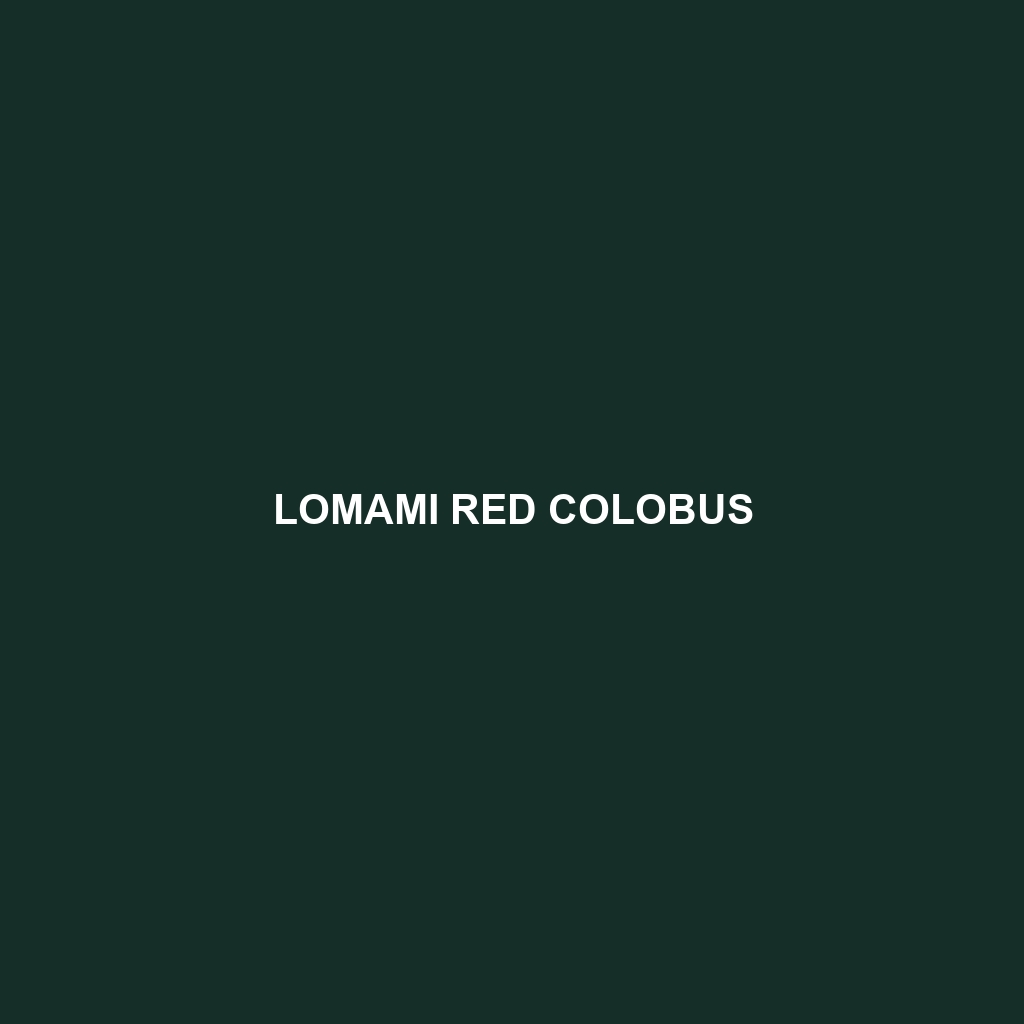Lomami Red Colobus: A Detailed Overview
The Lomami Red Colobus (Piliocolobus parmentieri) is a striking and rare primate found primarily in the Lomami basin of the Democratic Republic of Congo. Known for their vibrant coloration and unique social behaviors, these monkeys are a fascinating subject of study in the animal kingdom. The Lomami Red Colobus is an arboreal species that plays a crucial role in their ecosystem, contributing to seed dispersal and forest health.
Physical Characteristics:
Size: Adult Lomami Red Colobus monkeys typically weigh between 7 to 11 kg (15 to 24 pounds) and measure about 45 to 70 cm (18 to 28 inches) in body length, with their tails adding an additional 50 to 75 cm (20 to 30 inches).
Coloration: True to their name, Lomami Red Colobus have a distinctive reddish-brown coat. Their back and limbs showcase a vivid red hue, while their underbelly and face are often lighter, ranging from pale yellow to white. Their faces are framed by sparse, dark fur, giving them a unique and expressive appearance.
Special Features: One of the most notable features of the Lomami Red Colobus is their elongated limbs and prehensile tail, which aid in their arboreal lifestyle. Their thumb is reduced, which is a common trait in Colobines, allowing for a more efficient grasping mechanism geared towards their folivorous diet.
Behaviors:
Social Interactions: Lomami Red Colobus are highly social animals, often found in troops ranging from 10 to 80 individuals. These groups are characterized by a matrilineal structure, with females typically remaining in their natal groups while males may migrate to new groups upon reaching maturity. Communication within the troop is maintained through a combination of vocalizations, facial expressions, and physical gestures.
Feeding Habits: These primates are primarily folivores, with a diet consisting mainly of young leaves, though they may also consume fruits, flowers, and seeds. Their complex stomachs are specially adapted to ferment and break down the tough cellulose found in leaves, allowing them to extract the necessary nutrients.
Ecological Roles: As key seed dispersers, Lomami Red Colobus play an essential role in maintaining the health and diversity of their forest habitats. Their feeding habits help to control plant populations and promote new growth, contributing to the overall ecological balance.
Habitats:
Geographic Range: The Lomami Red Colobus is endemic to the Democratic Republic of Congo, primarily inhabiting the Lomami basin region.
Preferred Habitats: These monkeys thrive in dense, primary rainforests, particularly favoring areas with a rich canopy and abundant food sources. They are rarely found in secondary or degraded forests, highlighting their need for pristine environments.
Adaptations:
Arboreal Lifestyle: With their elongated limbs and prehensile tails, Lomami Red Colobus are adept at navigating the treetops. Their reduced thumbs enhance their ability to grasp and manipulate branches as they move through the canopy.
Digestive Specialization: Their multi-chambered stomachs are specialized for fermenting and digesting fibrous plant materials, allowing them to subsist on a diet that would be indigestible to many other animals.
Conservation Status:
Threats: The Lomami Red Colobus faces numerous threats, including habitat destruction due to logging and agricultural expansion, as well as hunting for bushmeat. Their limited range and reliance on primary forests make them particularly vulnerable to these pressures.
Conservation Efforts: Conservation organizations are working to protect their habitats and reduce hunting pressures through community education and the establishment of protected areas. Continued research and monitoring are essential to ensure the survival of this unique primate.
Fascinating Fun Facts:
The Lomami Red Colobus has a specialized, low-pitched “rrrump” call, which is used to communicate with other members of their troop, especially during group movements or when warding off potential threats.
Unlike many other primates, Lomami Red Colobus monkeys have a reduced thumb, which is an adaptation that allows them to efficiently grasp tree branches as they navigate their arboreal habitat.
These monkeys are known for their playful nature, often engaging in social grooming and play-fighting, which helps to strengthen bonds within the troop and maintain social cohesion.
In conclusion, the Lomami Red Colobus is a remarkable primate with a unique blend of physical and behavioral adaptations that make them well-suited to their arboreal lifestyle. Conservation efforts are crucial to ensuring that this vibrant species continues to thrive in their natural habitat.
